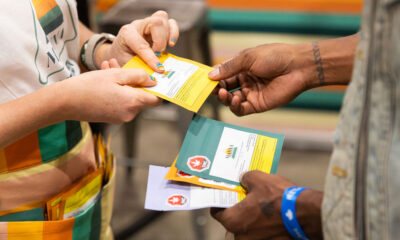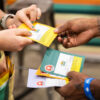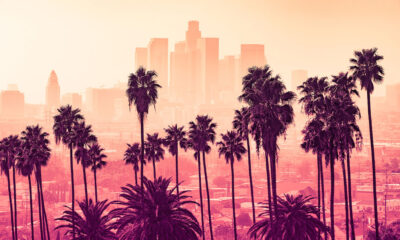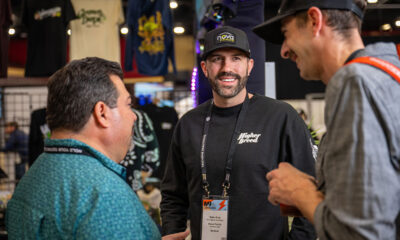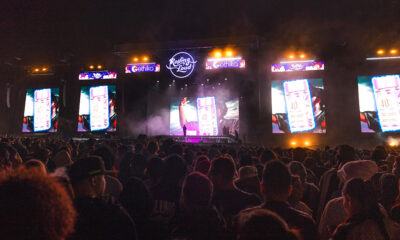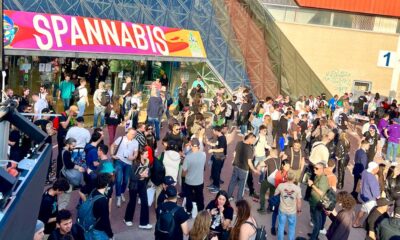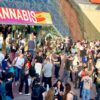
Industry Events
Green Street Festival Celebrates Cannabis Culture in Los Angeles
As the first public-facing Los Angeles cannabis event, the Green Street Festival heralds a new era in legitimizing the cannabis industry and public weed consumption.
What looked like another Saturday music festival in downtown Los Angeles was something much more—a pioneering entry in the history of cannabis legalization. Unlike other cannabis events that allow consumption, the inaugural Green Street Festival, which took place May 13-14, aimed to go public in the center of the largest cannabis market in California. It mostly succeeded.
On a busy stretch of South Hill Street, the Green Street Festival launched with a ticketed entry into the namesake Green Street building. The 67,000-square-foot, nine-floor “cannabis epicenter” opened in January, exclusively for cannabis-focused businesses. Inside, attendees could view the glass-fronted offices and coworking spaces that were set up for brand demonstrations, DJ sets. Meanwhile, the patios and rooftop were reserved for consumption. An adjacent parking lot was staged as a registration area that was in full view of shoppers and passersby in the slowly gentrifying Jewelry District in the city’s bustling center.
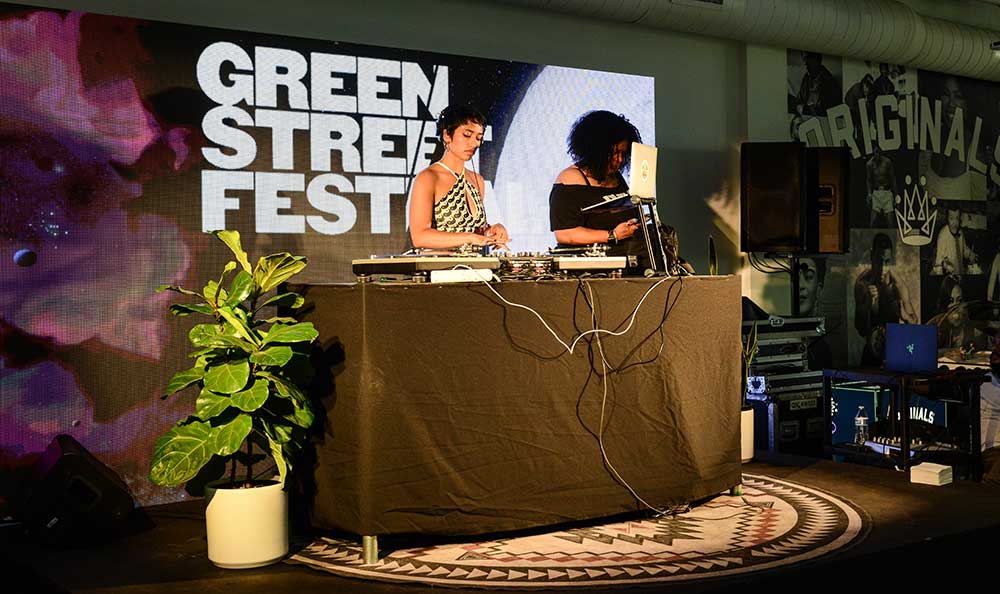
The Green Street Festival is the brainchild of Rama Mayo, a music, events and cannabis entrepreneur, and Gary Vaynerchuk, a media and advertising executive. Along with Joshua Shelton, the business partners own a house of cannabis brands and operate the Green Street creative and compliance agency, which is headquartered in the building. Green Street’s principals are also co-founders of the reputable industry event Hall of Flowers.
“The whole point was to celebrate the building once a year,” Mayo says. “It’s the first time I did a consumer event with cannabis.”
Many marquee cannabis events are organized for industry professionals only, depriving loyal fans an opportunity to meet suppliers and to build community, which has been a cornerstone of the weed experience. Others, such as the Kushstock Festival, are set in remote locations, out of sight of the general public.
Even in America’s largest marijuana market, cannabis normalization is a long way off. But even though the Los Angeles cannabis festival was scaled back, it helped demonstrate that weed can be publicly celebrated in a major city’s business district.
The two-day festival began May 13 with a VIP dinner in the building’s ground floor restaurant, Gusto Green, where diners sampled fresh hemp in salads, cookies and pizza in an upscale, contemporary setting. Day Two of the festival included panel discussions featuring Vaynerchuk, food trucks, art installations and consumption in designated areas. However, according to public reports, the festival was supposed to have been staged either in a public park or the cordoned-off street. Instead, brand demonstrations were confined to the interior of the building and at the Majestic Downtown, an historic theater a few blocks away.
Mayo, a veteran concert promoter and indie record label owner, filled the Los Angeles cannabis festival with performers, including rapper Juicy J. Shuttle buses ferried guests between the two locations, splitting the energy and focus of the event.
Going Public
Mayo said he anticipated attendance of 5,000 people, though 2,000 ultimately came through the Green Street building.
“Something you can never get past if you’re a consumer is the private aspect of cannabis B2B events,” says Mayo, referring to the industry-only events. But public events could be the key to building customer loyalty, awareness and community. They could also help create a track record with city officials who can issue permits for public gatherings, which is equally important.
“In cannabis, there aren’t many events and they’re really hard to do,” Mayo said. “You can’t buy ads. You can’t do promotions or gifting.”
With in-person events, attendees can gain valuable word of mouth marketing, which carries an exceptionally high rate of trust.
Things Didn’t Go as Planned
In January, the festival organizers announced that the event would take place “in a historic outdoor venue in downtown Los Angeles.” Though Mayo said that he asked for a permit a year ago, the permission was withdrawn, and the organizers had to quickly pivot to indoor venues.
“Essentially, city officials aren’t ready for the city to do anything on public property,” Mayo says. “Whatever. We’ll figure it out. We have a long-term plan. And what I showed the city originally was this plan to use the building and the parking lot. I wanted to shut the street down, but then they said it’d be easier to do it at a park,” he says.
Dispelling Stereotypes
Still, tenants and representatives from outside brands seemed thrilled with the Los Angeles cannabis festival.
“Our whole purpose is to show people there’s a productive nature in the cannabis industry,” says Joesh “Savage” Wright, who heads the Skylark cannabis brand and shares an office in Green Street.
For Francesca “Goldie” Salafia, who operates the Alpaca Club LA delivery service, the Green Street Festival supercharged the experience she has as a tenant. She called it “a chance to connect with many industry people mixed with the opportunity to change end consumers’ experience and belief systems of what cannabis is.”
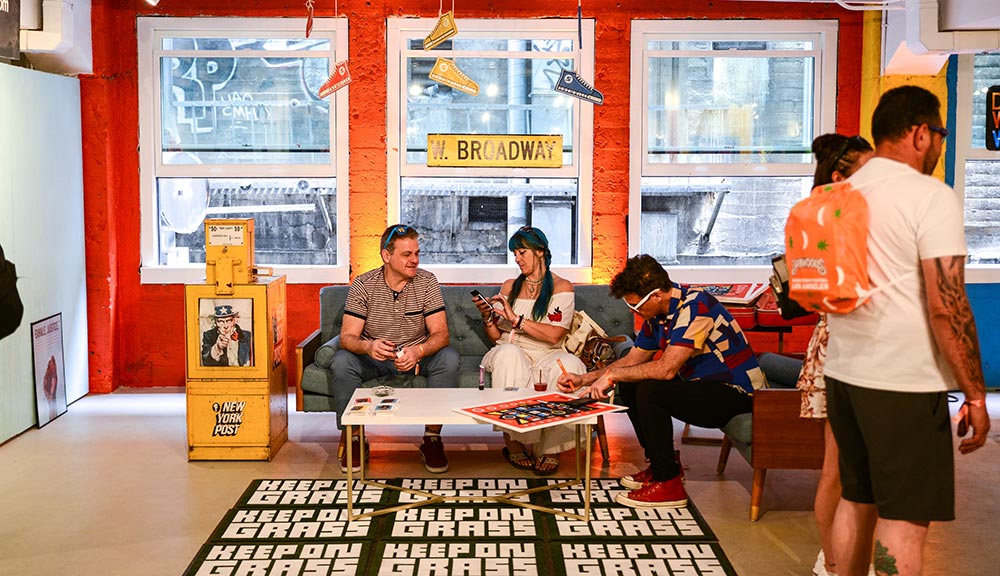
“The festival is another example of how we can come together and create the awareness that the movement needs,” says tenant Jono Pinsky, CEO of creative marketing agency 3is4, who was glad to expose visitors to the many kinds of companies involved in the industry. They could also share in the feeling of being a Green Street tenant, which he likened to “a tradeshow every day.”
Having a building dedicated to cannabis is helping restore the plant’s image, says Jeronimo de Miguel, Gusto Green’s managing partner. “It legitimizes the whole thing, and in doing so, it creates a sense of authenticity and community.”
But Wait, There’s More
The festival’s VIP dinner at Gusto Green, however, was a success, selling out the 50 spots at nearly $1,000 a ticket, according to de Miguel. The 220-seat restaurant, which functions as a sort of commissary for the tenants, also serves as an entry point for the cannacurious. The menu now includes fresh non-psychoactive hemp leaves or hearts sauteed with other greens or incorporated into sweet potato fries, caldo verde soup, pizza and cookies.
In the short time the building has been open—since January 2022)—Rama correctly predicted that “people would want to come to the ‘weed building’ expecting a tour.” To satisfy that interest, a new retail concept is coming this summer. Rama says delivery service HyperWolf will launch a new kind of head shop featuring brands that work within the building and the agency.
“It’ll basically be the nicest smoke shop in the world,” predicts Rama, who promises all manner of merchandise and hardware. Importantly, the shop will also give the public another point of access to the building and to the brands—though it can’t sell weed.
Even though the Green Street Festival fell short of the vaulted expectations, Mayo is taking the long view.
“It’s still just the beginning of this world,” he says. “I’m already working on the next festival.”





